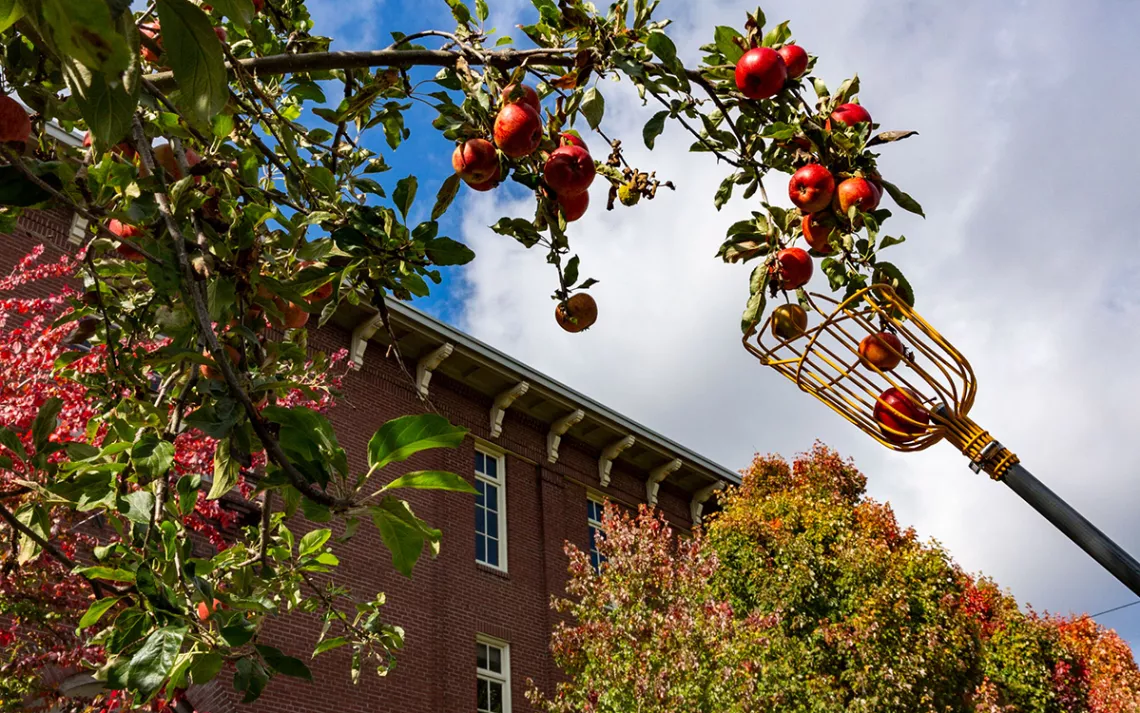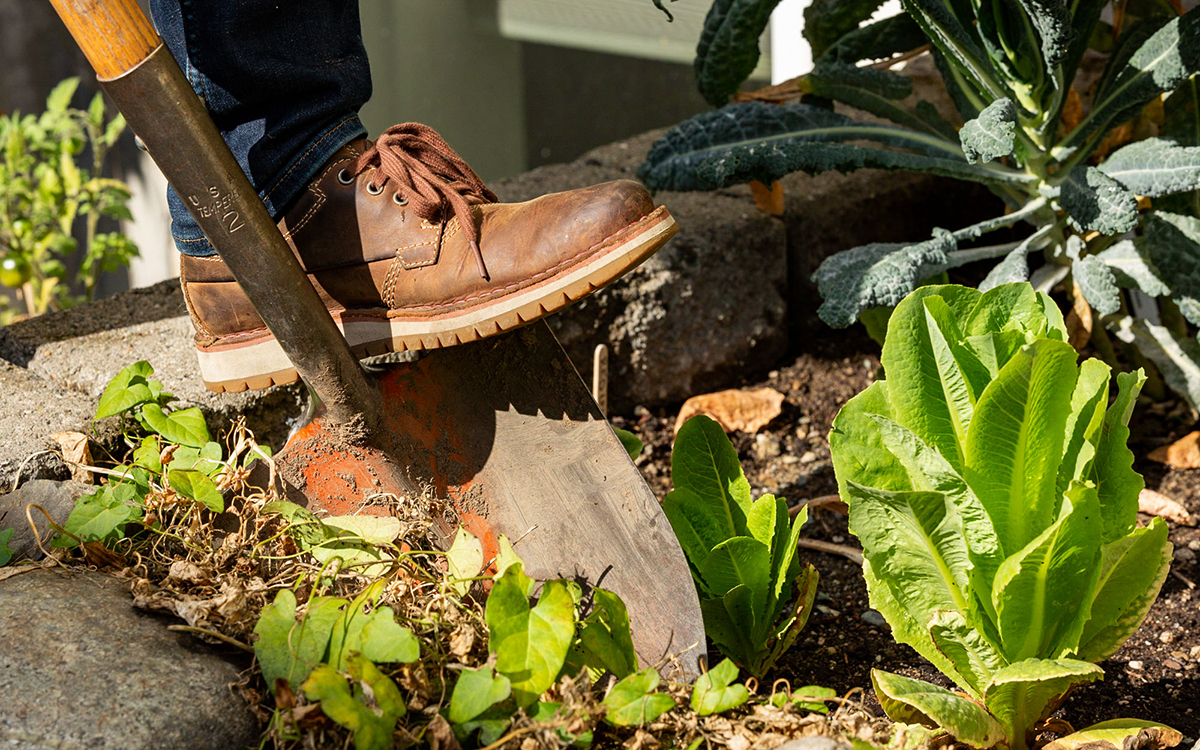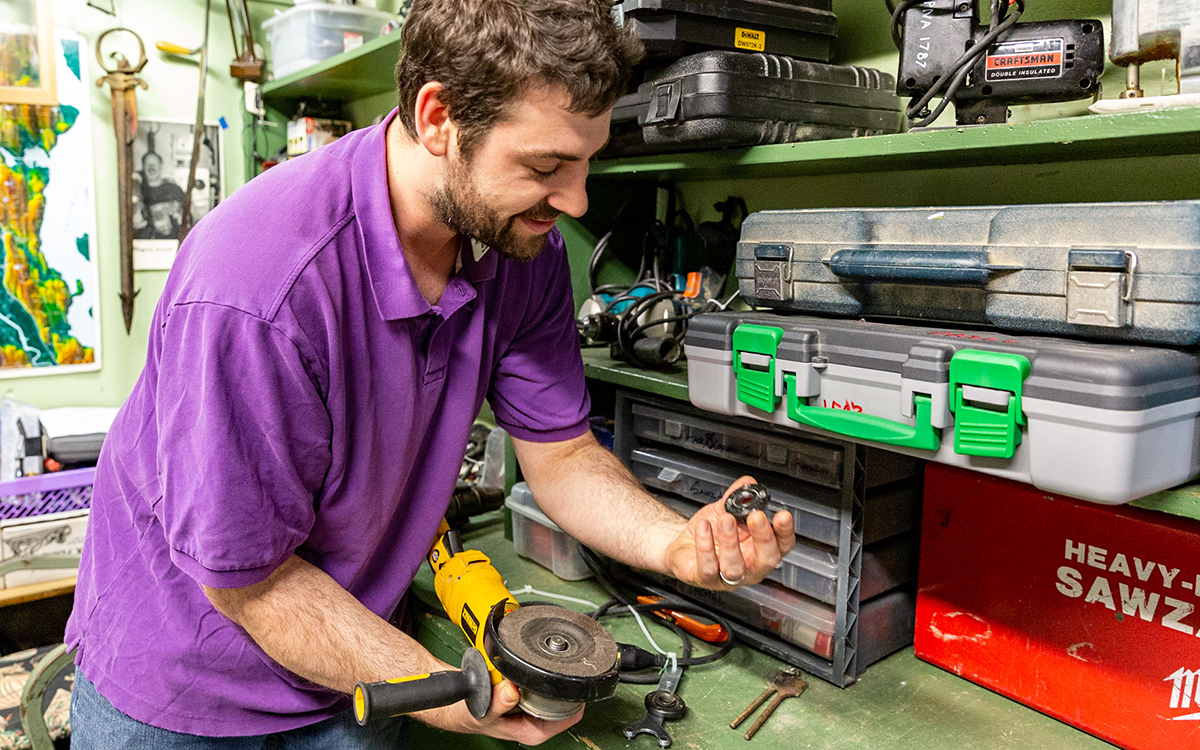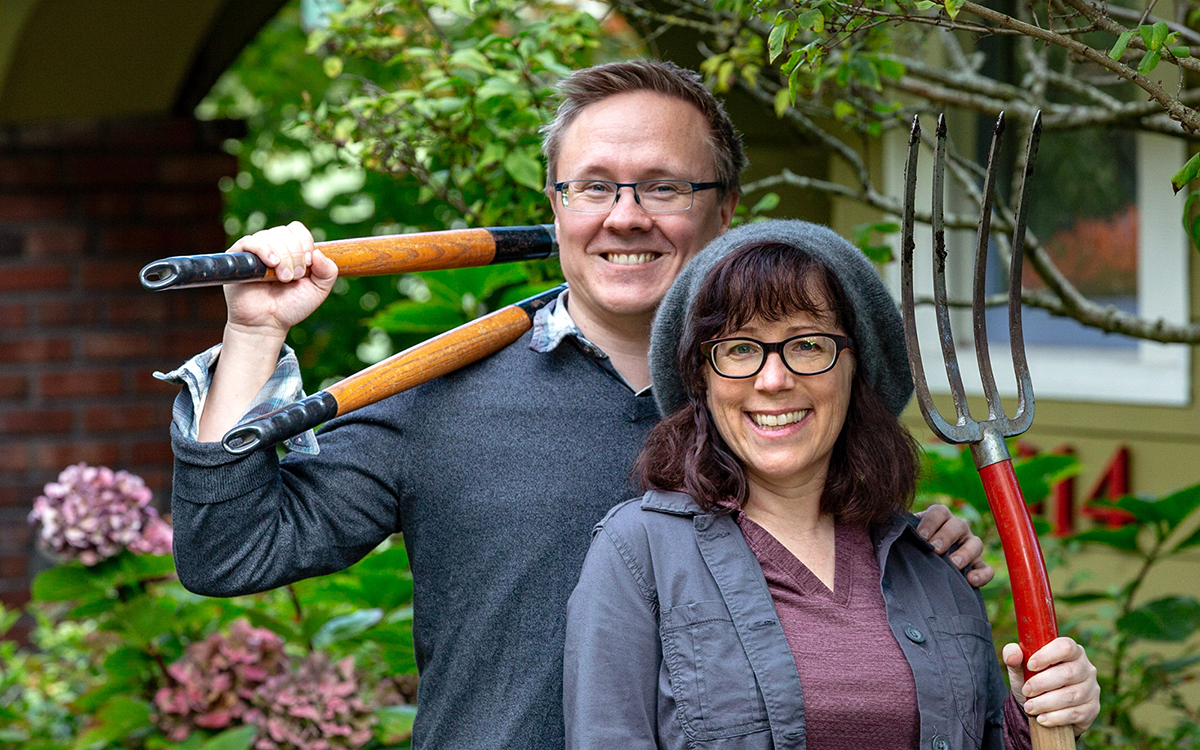Welcome to the Library of Things
It’s showing us all how to own less, and borrow more

An apple-picker on loan from Seattle’s Phinney Neighborhood Association Tool Library
|
Photos by Amanda Castleman
Need a dehydrator to preserve a bumper crop of peaches? An aerator to reduce your compost pile’s pungency? How about a cello, a carpet cleaner, or even camping equipment? Nowadays, you can turn to social enterprises that facilitate the sharing of goods among members, which saves money and space. They also eliminate pollution from the manufacturing and delivery of items not used in regular rotation.
Sharing behavior has deep roots. For most of human history, private property didn’t exist: Community members took care of one another, passing around items they couldn’t use in the moment. Ironically, technology is returning us to our preindustrial traditions, and it's fostering a sense of support and connection with others.
In his book The Sharing Economy, New York University business professor Arun Sundararajan writes, “Today’s digital technologies seem to be taking us back to familiar behaviors, self-employment, and forms of community-based exchange.”
What’s different this time around, however, is that we’re not just cooperating with family and friends who live nearby. Rather, the internet allows for “stranger sharing,” and entrepreneurs are helping to make it happen on an unprecedented scale.
 According to the Brookings Institution, the sharing economy is surging and will have a $335 billion footprint by 2025. The concept goes by a handful of names—The Mesh, collaborative consumption, and crowd-based capitalism—and commercial services like Lyft, Airbnb, and Rent the Runway have already mainstreamed it.
According to the Brookings Institution, the sharing economy is surging and will have a $335 billion footprint by 2025. The concept goes by a handful of names—The Mesh, collaborative consumption, and crowd-based capitalism—and commercial services like Lyft, Airbnb, and Rent the Runway have already mainstreamed it.
“People perceive ownership as less important,” says Jiyoung Hwang, a marketing professor at the University of North Carolina at Greensboro. According to a Boston Consulting Group study, more than 80 percent of US consumers say they would spend more on durable products designed to be used collectively.
The biggest drivers of change are service intermediaries like Zipcar, and the near-ubiquity of smartphones. But no aspect is more grassroots and downright charming than Libraries of Things (LoTs), which allows communities to pool resources.
Gene Homicki is a leader on this front. In 2013, he cofounded myTurn, a platform that manages logistics—like inventory, reservations, and automated reminders—for LoTs. Initially, Homicki’s team just wanted to get items out of closets, attics, and garages and put them to use. But they got more than they bargained for: “We discovered LoTs created communities around them,” he says. “And while people have a ton of stuff in storage, businesses, universities, and cities are often drowning in underutilized equipment.”
Homicki adds, “We’re starting to hit practical planetary limits on resource extraction and pollution, and we need to rapidly make changes. Plastic pollution in the oceans is reaching a critical point, many solid waste and recycling facilities are reaching or have exceeded capacity, and the UN recently reported that we have only 11 years to avert climate disaster. Compounding this, we are seeing a rise in middle classes in emerging nations. Billions more people, rightly, want to have access to products that the developed world has enjoyed.”
A simple and immediate first solution? Make it a priority to own less, borrow more. “Reducing consumption has one of, if not the biggest, environmental impacts when taking into account resource extraction, manufacturing, and global supply chains, transportation, storage, and the eventual disposal of products,” Homicki says. “A UN International Resource Panel report suggests that this can reduce greenhouse gas emissions in some sectors by 79 to 99 percent.”
Of course, reuse helps, as does repairing items and eventually recycling them. But as Homicki notes, “Sharing is the only solution that increases access to products while reducing consumption and waste.”
MyTurn’s software allows LoT members to pop online, see what’s available, and even watch videos on how items work. According to Homicki, it catalogs tents and sleeping pads that spent over 250 days in use last year and a DeWalt table saw that has been loaned out 321 times to 211 different people. Users can also reserve items for specific dates and sometimes pick them up 24/7, thanks to recently introduced e-lock systems.
The technology also meshes with many public library networks, which is handy, because book repositories are increasingly expanding their repertoires, explains Lynn Lobash, the New York Public Library’s assistant director of reader services. “We circulate ties and jackets for people going on interviews or needing to look professional. We also had some American Girl dolls. Each branch got to pick out ones that best represented their communities.” The library also gives away seeds and loans hotspots to kids who don’t have internet access at home.
“First and foremost we’re in the book business,” Lobash says. “Nonetheless, there’s room. For so long, we’ve had this lending mechanism in place. It just makes sense to extend that to things if our members need them.”
And the New York library isn’t alone. From Alaska to Accra, Ghana, LoTs are offering access to useful items while combating our societal “peak stuff” problem. Some require a membership fee while others seek small donations or payments.
 Seattle is home to the world's oldest continuously operating tool library, which dates back to the 1970s. It all began with some University of Washington students who wanted to clear out their dorm rooms, explains coordinator Elliot Scher (left). From a single locker, the collection has swelled to thousands of items, now loaned out through the Phinney Neighborhood Association. “We help members better their homes and lives without breaking the bank,” Scher says. “Most people don’t need to own a cider press, lawn roller, or cement mixer. They just need to use one for a bit."
Seattle is home to the world's oldest continuously operating tool library, which dates back to the 1970s. It all began with some University of Washington students who wanted to clear out their dorm rooms, explains coordinator Elliot Scher (left). From a single locker, the collection has swelled to thousands of items, now loaned out through the Phinney Neighborhood Association. “We help members better their homes and lives without breaking the bank,” Scher says. “Most people don’t need to own a cider press, lawn roller, or cement mixer. They just need to use one for a bit."

The library has a large raft of volunteers who expertly repair the inventory. And when equipment hits the end of its life span? “I reach out to artists who make them into lamps and sculptures,” Scher says. “There’s very little waste here.”
Those intangibles—expert help, community support, and goodwill—also come into play at the nearby Washington Trails Association (WTA), explains outdoor leadership training manager Andrew Pringle. WTA offers outdoor training and gear loans to leaders in schools, and youth and church groups, along with mini grants to help with costs like bus rentals. “Alumni of our skills-building workshops can borrow equipment—as much as they need, as often as they need, even for big groups,” he says. “It’s completely free, unless you lose something. Then we charge a small fee to help restock.”
The idea behind the WTA’s gear library is to empower leaders who don’t see themselves as outdoorsy. “But they know their communities and what it will take for a trip to be successful. We just give them skills, knowledge, and gear so everyone has a good time,” Pringle says. The WTA doesn’t court individual gear donations, because the whole “who gets what” palaver can cause too much drama among kids, he adds. However, corporate supporters help by providing free or deeply discounted equipment.
If this sharing economy of ours can cut down on consumption and expand access to the great outdoors, we’ll chalk LoT culture up to a win-win.
 The Magazine of The Sierra Club
The Magazine of The Sierra Club



